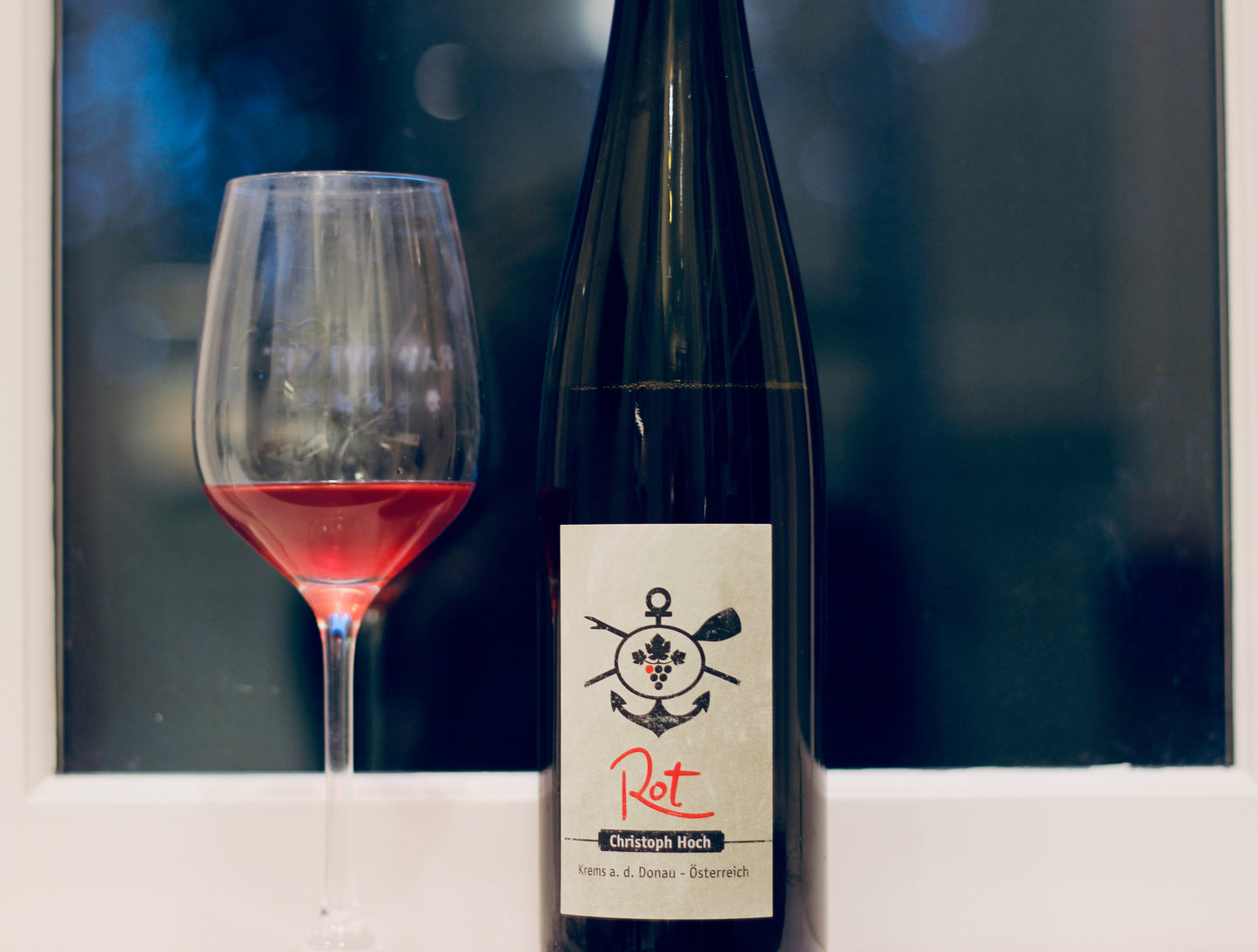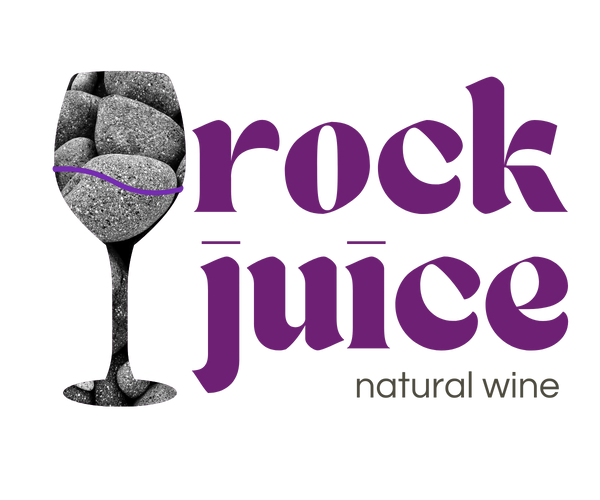NV Christoph Hoch Hollenburger 'Rot'
NV Christoph Hoch Hollenburger 'Rot'
Region: Hollenburger < Kremstel < Germany
Grapes: 80% Rotburger (aka Zweigelt), 20% Blauer Portugieser
Vineyard/Cellar Stats: Demeter certified biodynamic farming; white chalky soils called 'Hollenburger conglomerate', formed by the Traisental and Danube rivers crashing together and compacting chalk and river stones; grapes are stomped by foot with whole clusters and undergo a semi-carbonic fermentation (about 75% of the total). Aged in a combo of large and small barrels, about half of which are not topped off and the wine develops flor; bottled unfined/unfiltered with zero added So2; zero-zero; 9.5% ABV
Winemaker: Christoph Hoch
Christoph Hoch is the 12th generation (since 1640!) to make wine in his town of Hollenburg, on the south side of the Danube. Historically, vines were planted on this side of the Danube and the north side was for food crops. In 2013, Hoch split from his parents winery, starting with five hectares that would have been his inheritence eventually. Today (Sept. 2019), Hoch has 12 hectares total, all in Hollenburg, and all farmed biodynamically and certified by Demeter. His soils are super chalky, on par with the Côte des Blancs in Champagne, bringing minerals to the vines. Throughout all of Christoph’s vineyards, you find a ton of life planted between the vines, with herbs and grains like mustard, which brings sulfur to the soil and protects the plants so that he can use as little as possible in his work. And rye, which brings carbon to the soil. He knocks it down after it has grown and it creates a natural humus. He is also an instructor for the wine school in Krems, where he teaches biodynamic farming. And his total production is 5,500 cases per year across the board, most of which are his whites (which are amazing). But it is his very small production and special red blend that had us swooning.
The Rot (red) is a blend of three vintages, supporting Christoph's vision that the best expression of terroir comes from the blend rather than a dominant vintage. Young wines add fruit and older wines bring tannins and structure. The grapes are stomped by foot with whole clusters and undergo a semi-carbonic fermentation, and then during barrel aging, he refrains from topping off in about half of the barrels so that the wine develops flor, giving more depth and complexity. The end result is a super light but energetic red with tart cherry, underripe blueberry and wet, foresty earth alongside some surprising, but friendly, tannin. It's such a happy wine, and exactly the fresh, low ABV (9.5%!) chillable red we want on repeat throughout the holiday season. Want to get off the naughty list for good? Skip the milk, give Santa some Rot with his cookies this year!
Couldn't load pickup availability


